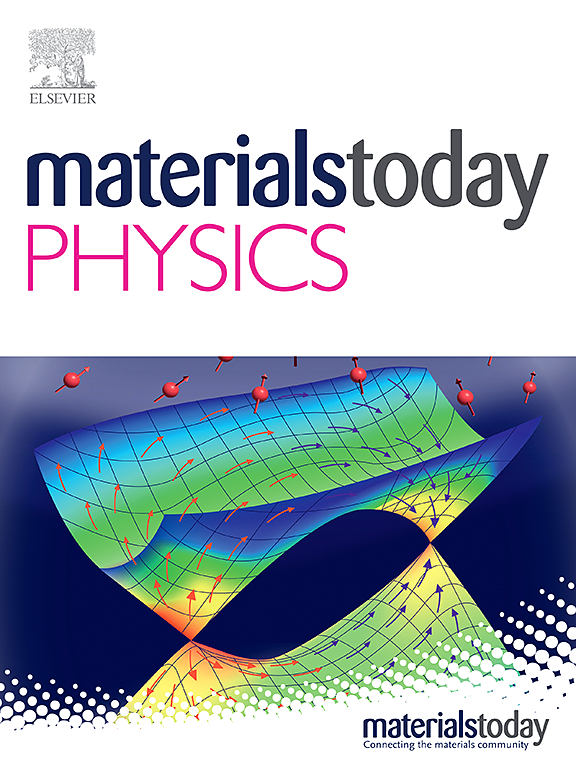Accelerating high-throughput phonon calculations via machine learning universal potentials
IF 10
2区 材料科学
Q1 MATERIALS SCIENCE, MULTIDISCIPLINARY
引用次数: 0
Abstract
Phonons play a critical role in determining various material properties, but conventional methods for phonon calculations are computationally intensive, limiting their broad applicability. In this study, we present an approach to accelerate high-throughput harmonic phonon calculations using machine learning universal potentials (MLIPs) combined with an efficient training dataset generation strategy. Instead of computing phonon properties from a large number of supercells with small atomic displacements of a single atom, our approach uses a smaller subset of supercell structures where all atoms are randomly displaced by 0.01 to 0.05 UŮ, significantly reducing computational costs. We train a state-of-the-art MLIP based on multi-atomic cluster expansion (MACE), on a comprehensive dataset of 2738 materials with 77 elements, totaling 15,670 supercell structures, computed using high-fidelity density functional theory (DFT) calculations. The trained model is validated against phonon calculations for a held-out subset of 384 materials, achieving a mean absolute error (MAE) of 0.18 THz for vibrational frequencies from full phonon dispersions, 2.19 meV/atom for Helmholtz vibrational free energies at 300K, as well as a classification accuracy of 86.2% for dynamical stability of materials. A thermodynamic analysis of polymorphic stability in 126 systems demonstrates good agreement with DFT results at 300 K and 1000 K. In addition, the diverse and extensive high-quality DFT dataset curated in this study serves as a valuable resource for researchers to train and improve other machine learning interatomic potential models.
通过机器学习通用势加速高通量声子计算
声子在确定各种材料特性方面起着至关重要的作用,但传统的声子计算方法计算量大,限制了它们的广泛适用性。在本研究中,我们提出了一种使用机器学习通用势(MLIPs)结合有效的训练数据集生成策略来加速高通量谐波声子计算的方法。我们的方法不是从单个原子的小原子位移的大量超级细胞中计算声子特性,而是使用更小的超级细胞结构子集,其中所有原子随机位移0.01至0.05 UŮ,从而显着降低了计算成本。我们训练了一个基于多原子簇扩展(MACE)的最先进的MLIP,该数据集包含2738种材料,77种元素,总计15670个超级单体结构,使用高保真密度泛函理论(DFT)计算。通过384种材料的声子计算验证了训练后的模型,在全声子色散的振动频率上实现了0.18 THz的平均绝对误差(MAE),在300K下亥姆霍尔兹振动自由能达到2.19 meV/原子,在材料的动态稳定性上实现了86.2%的分类精度。对126个体系的多态稳定性进行了热力学分析,结果与DFT在300 K和1000 K下的结果一致。此外,本研究中整理的多样化和广泛的高质量DFT数据集为研究人员训练和改进其他机器学习原子间势模型提供了宝贵的资源。
本文章由计算机程序翻译,如有差异,请以英文原文为准。
求助全文
约1分钟内获得全文
求助全文
来源期刊

Materials Today Physics
Materials Science-General Materials Science
CiteScore
14.00
自引率
7.80%
发文量
284
审稿时长
15 days
期刊介绍:
Materials Today Physics is a multi-disciplinary journal focused on the physics of materials, encompassing both the physical properties and materials synthesis. Operating at the interface of physics and materials science, this journal covers one of the largest and most dynamic fields within physical science. The forefront research in materials physics is driving advancements in new materials, uncovering new physics, and fostering novel applications at an unprecedented pace.
 求助内容:
求助内容: 应助结果提醒方式:
应助结果提醒方式:


